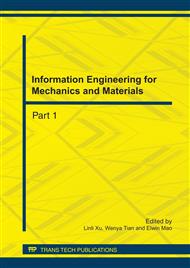p.1305
p.1310
p.1315
p.1320
p.1324
p.1330
p.1335
p.1340
p.1345
Development and Test Study of a New Classification Equipment for Bauxite Desiliconization
Abstract:
In this paper, a new classification equipment for Bauxite desiliconization is introduced, which combines Centrifugal with gravity and it can separate diaspore and slime effectively in a composite force; The flow field in the equipment was simulated by Fluent software for explaining separation process and principle; the laboratory experiments and pilot tests had been finished on this kind of device, showing that a concentrate with Al2O3 recovery of 90.64% and Al-Si ratio of 6.34 was obtained from the feed with a Al/Si ratio of 4.7 based on one stage desiliconization separation; the pilot tests show that new classification equipment for Bauxite desiliconization can increase the concentration with Al2O3 recovery by 1.59 percent and Al-Si ratio by 0.19 and degrease the Al-Si ratio of tailing by 0.39. The separation index of the new separator is better than the general separator obviously.
Info:
Periodical:
Pages:
1324-1329
Citation:
Online since:
July 2011
Authors:
Keywords:
Price:
Сopyright:
© 2011 Trans Tech Publications Ltd. All Rights Reserved
Share:
Citation:


